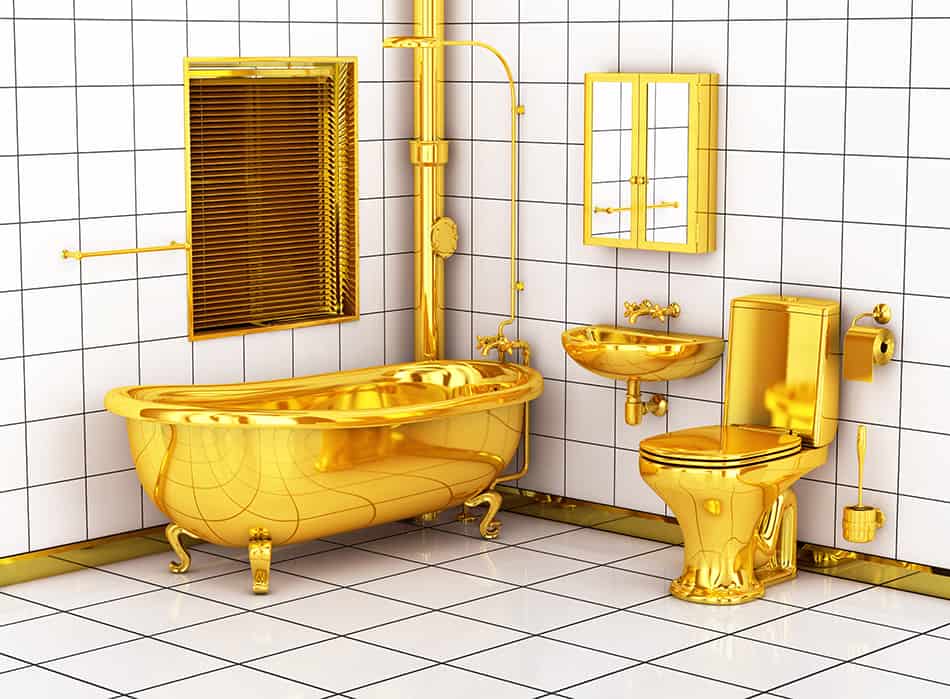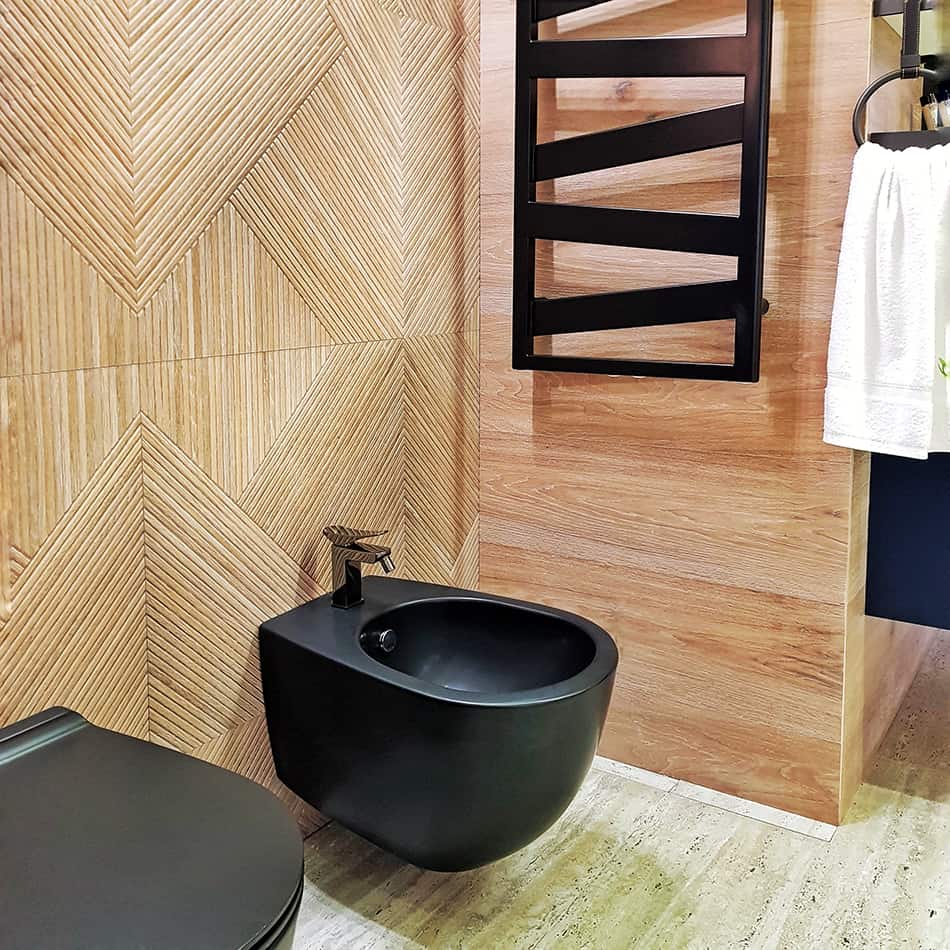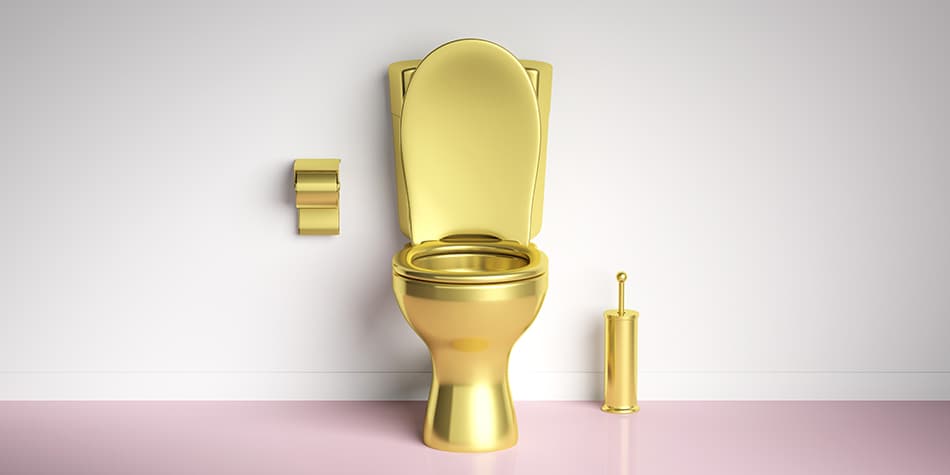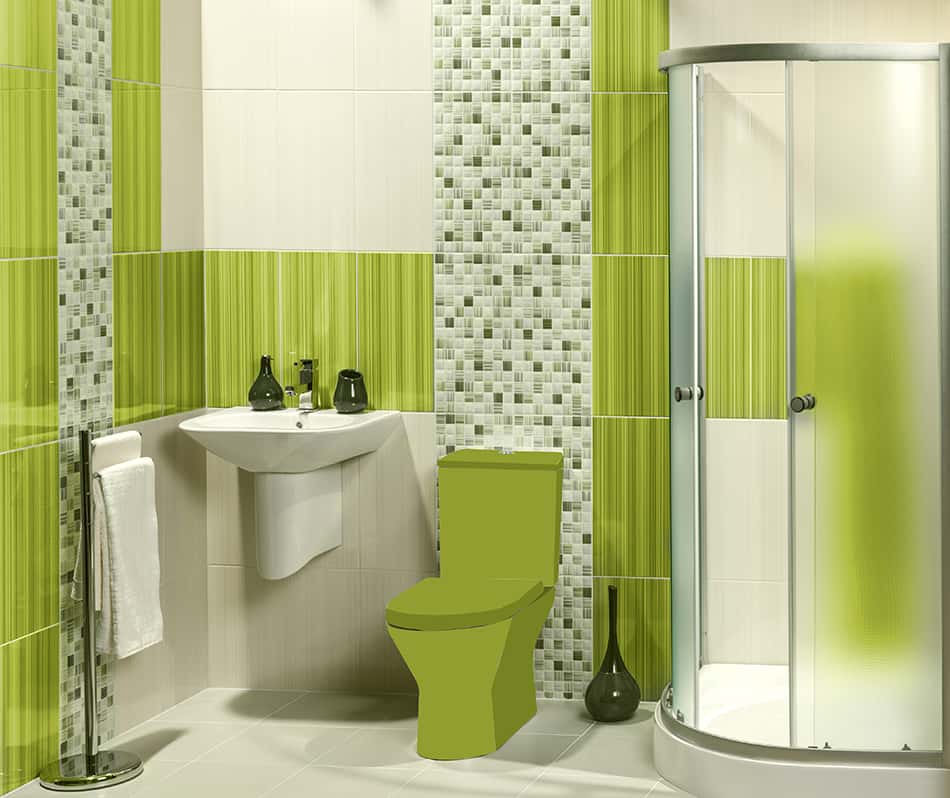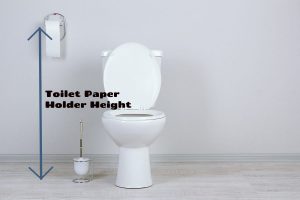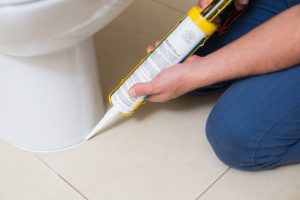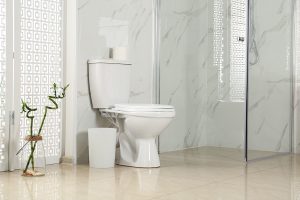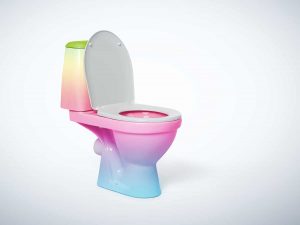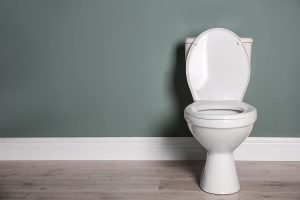One of the more important parts of the house is the toilet or the bathroom. It is here where we do our personal business. For some people, the toilet serves as a private place where they can relax and unwind after a long day.
You might be planning to renovate your house, and that includes giving your toilet a make-over. Or you simply want to repaint this part of the home. And part of the planning is to find out about the common toilet colors. Well, we got you covered as this article will discuss the most common color choices for the bathroom.
Black
Black is also a popular color choice for people wanting to have a unique bathroom.
You’d be surprised to learn that black has been traditionally used in bathrooms and toilet bowls. American firm Kohler, best known for its plumbing products, has had black toilets in its line for more than 90 years. The same goes for the luxury brand, Toto. However, black’s popularity as a toilet color goes up and down with the times. It’s not as consistent as white, which is undoubtedly the prime choice for bathroom and toilet color.
In the 1920s, art deco-inspired many homeowners to have black toilets. Six decades later, black toilets had a resurgence in popularity thanks to modern Italian design. These days, the popularity of black stainless kitchen appliances and even black finishes on cars are believed to have helped black regain its spot as a common toilet color.
There are several benefits of having a black toilet. It’s unique and can spice up a boring toilet. Painting the bathroom walls black can also match other black items in the area. And black can hide solid waste stains pretty well.
However, black toilets can be prone to water stains or toilet rings. It is also not ideal for areas with hard water.
Gold
If you want to add a luxurious vibe to the bathroom or toilet room, then consider a gold toilet. Keep in mind these toilets are not made from real gold but from gold-plated ceramic. One downside is that a gold toilet is not cheap – it typically costs about $2000 with some special type costing over $20,000.
White
White is undeniably the most common toilet color across the globe. And it makes sense because white is a neutral color. It’s also often associated with cleanliness. But if you’re a curious person, then you might still be asking yourself: “what are the other reasons why toilets are white?”
The most oft-mentioned reason is that the material it is made of, porcelain, is colored white. A toilet is also fondly called the porcelain throne about the material from which it is made.
Porcelain is a ceramic material made from fine, white clay called caolin. It has two qualities that make it a great material for toilets– one, it is durable, and two, it’s easy to clean. Porcelain is strong enough to last a lifetime. Your toilet made of porcelain won’t get damaged even if you push it down or sit on it countless times during your life.
Moreover, it is stain-proof and easy to clean. It’s easier to spot stains on a white toilet bowl, which makes it easier to clean. You can easily tell when to clean white toilet bowls just by glancing at them.
There’s also a practical reason why toilets are white. Porcelain toilets can be produced in other colors, but this can come at an added cost. White porcelain toilets, therefore, are cheaper because of the elimination of one or two additional steps in their production.
Moreover, white has a positive impact on the emotions of toilet users. White is often associated with qualities such as cleanliness, purity, and safety. This explains why most hospital wards are painted white. The color gives the impression that the space is sterile or clean. Therefore, people would feel safe or at ease when they sit on a white toilet.
Finally, many societies around the world have come to accept and embrace white as the color of toilets. It has become the norm in many countries around the globe. When you’re asked what’s the color of your toilet, you’d likely reply, “white!”
Beige
Beige is not as popular as white when it comes to toilet bowl colors. Some people think it is dull. But it’s a good choice for other parts of the toilet such as the walls and flooring. It is a surprisingly versatile color that can enhance the look and feel of the bathroom.
Beige is a neutral color meaning it can work well with almost any other color, especially those found in nature. Some people think beige looks out of place in home decor. This is not primarily due to color mismatch but more because of discrepancies in hue and saturation. Beige is on the lighter end of both the hue and saturation scales. Therefore, any color of similar hue and saturation will end a comfortable and satisfying effect on the bathroom.
Sure, you may find it difficult to find a beige toilet bowl. But this doesn’t mean that you can’t make your bathroom predominantly beige. You can use beige tiles for your next toilet renovation project. Replace old tiles on the floor, walls, tables, and even countertops with beige tiles to achieve your desired cozy and spa-like ambiance.
Beige tiles can be sorted or categorized into three groups- warm, cool, and true neutral. Warm beige tiles have warm red-orange undertones, while cool beige tiles have gray to blue undertones. Meanwhile, neutral beiges have no undertones and thus can go well with just any color.
Now, you may wonder, when do you use or opt for these groups of beige tiles? It’s recommended that beige tiles with warm red-orange undertones be paired with warm colors like red, orange, and yellow. On the other hand, you’d want to use cool beige tiles with cool colors such as blue, violet, and green.
If the bathroom gets insufficient natural light, it is recommended that a neutral color scheme is used in it. Neutral colors like gray and white will not only darken the room but would work well with beige tiles. Moreover, gray and white are considered warm and cool colors and thus can be complemented by either cool beige and warm beige tiles.
But what if your bathroom is small? Would it be ideal or favorable to use beige as the primary color? If your goal is to make the toilet seem bigger, then match the color and finish of the beige tile. This way, the bathroom’s background would feel large and unbroken. This can make a small bathroom look larger.
Gray
Gray is similar to beige in the sense that many people don’t think of it as an exciting color. You can argue that it is both dull and boring. But you’d be surprised that it is a color that’s often used in toilets.
Like white and beige, gray is a neutral and subtle color capable of blending well with any color palette and decor pattern. You can also choose from various gray toilet bowls ranging from classic to contemporary designs.
One way to make a gray color stand out in a bathroom is to counterbalance its coolness to prevent it from feeling sterile. How do you do this? One trick is to add warm wood tones or a shade of gray on the warmer end of the color spectrum.
To keep things neutral in the bathroom, you can paint the walls with a soft, light gray color. This would be perfect if your bathroom has a granite countertop, as it can make the space appear and feel soothing. You can also mix in dark wood elements to balance out the cool tones and warm things up in the bathroom.
If you desire a classic look in the toilet, you can add simple neutral accents. You may add bright towels in the bathroom or perhaps change the shower curtain with a patterned one. Gray can give you a lot of flexibility because it can blend well with pretty much every color.
Green
Green is a calming color that many people call the color of rejuvenation. It’s not surprising that it makes the list of the most common toilet colors. In years past, it was one of the more popular color choices for the bathrooms and toilets because of its refreshing and cool earthy vibe. Green can help you calm and relax while in the bathroom and as you prepare for the rest of the day.
These days, green is often overlooked as a color for bathrooms but make no mistake about its ability to provide a stunning shade for any toilet. From emerald to sage, green can be a good choice for a bathroom color.
Why is green a good choice for a bathroom or toilet? One reason is its versatility and flexibility. It can be the primary color of a modern or a classic toilet. Second, green is a calming and cooling color. Paint your bathroom wall with color with light blue undertone like seafoam green, and it can make your space feel peaceful and relaxing.
Lastly, green is bright and refreshing. Painting the bathroom walls with an apple green color can help refresh you in the morning. It can also make the space feel light and sunny.
